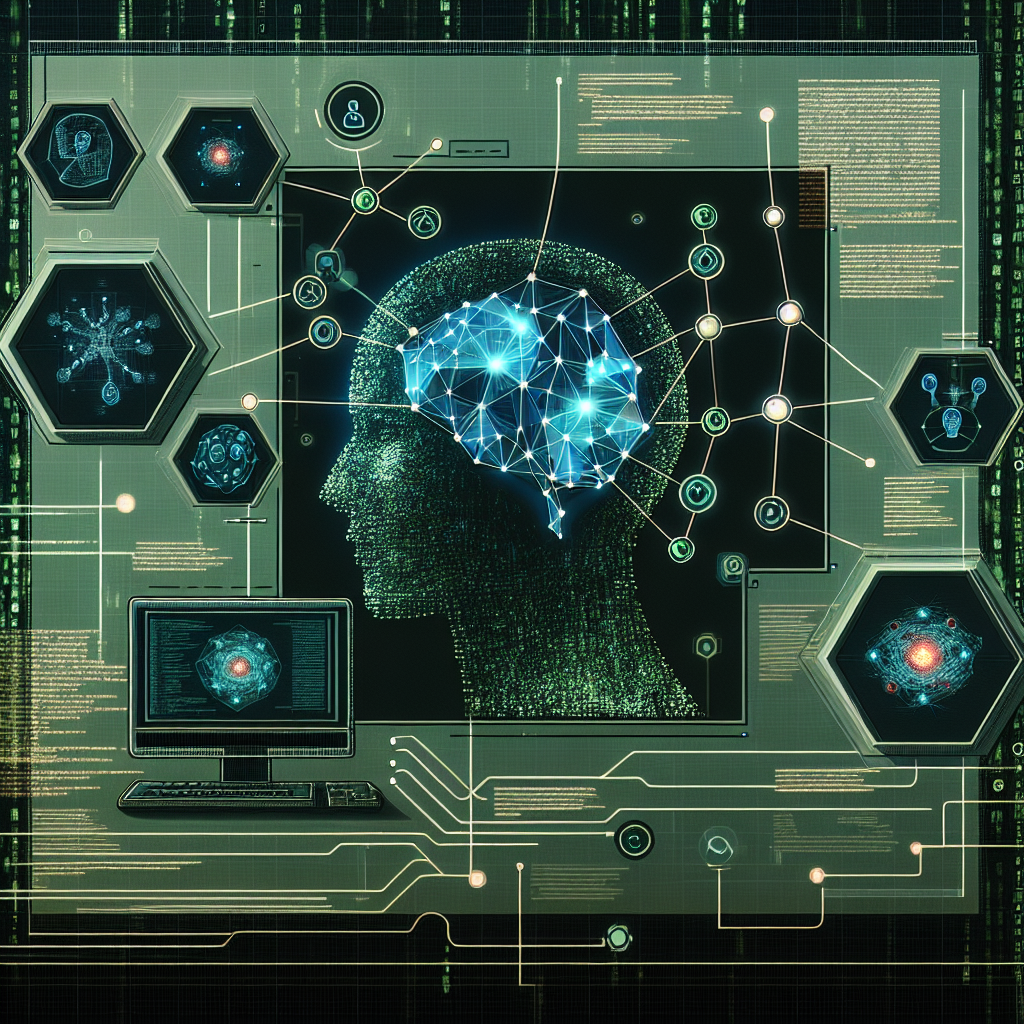In today’s digital age, cybersecurity is more important than ever. With the rise of cyber threats and attacks, organizations are constantly looking for new ways to protect their sensitive data and systems. One approach that has gained popularity in recent years is using artificial intelligence (AI) to proactively defend against cyber threats.
AI-driven approaches to cybersecurity use machine learning algorithms to analyze vast amounts of data in real-time, detecting and responding to potential threats before they can cause damage. By constantly learning and adapting to new threats, AI-driven cybersecurity systems can stay one step ahead of cybercriminals.
One of the key benefits of AI-driven cybersecurity is its ability to automate threat detection and response. Traditional cybersecurity systems often rely on manual intervention to detect and respond to threats, which can be time-consuming and prone to human error. AI-driven systems, on the other hand, can analyze data at a much faster pace and respond to threats in real-time, reducing the risk of a successful cyber attack.
AI-driven cybersecurity also has the ability to detect and respond to new and emerging threats that may not be recognized by traditional cybersecurity systems. By constantly learning and adapting to new threats, AI-driven systems can stay ahead of cybercriminals and protect organizations from the latest cyber attacks.
There are several key components of AI-driven cybersecurity that organizations should consider when implementing a proactive defense strategy. These include:
1. Threat intelligence: AI-driven cybersecurity systems use threat intelligence to analyze data and identify potential threats. By continuously monitoring and analyzing data, these systems can detect anomalies and suspicious activity that may indicate a cyber attack.
2. Behavioral analytics: AI-driven cybersecurity systems use behavioral analytics to identify patterns of behavior that may indicate a potential threat. By analyzing user behavior and network activity, these systems can detect and respond to suspicious activity in real-time.
3. Predictive analytics: AI-driven cybersecurity systems use predictive analytics to forecast potential threats and vulnerabilities before they can be exploited by cybercriminals. By analyzing historical data and trends, these systems can predict future threats and take proactive measures to defend against them.
4. Automated response: AI-driven cybersecurity systems use automated response mechanisms to quickly respond to threats in real-time. By automatically blocking suspicious activity and isolating infected systems, these systems can minimize the impact of a cyber attack and prevent further damage.
While AI-driven cybersecurity offers many benefits, there are also challenges and considerations that organizations should be aware of. Some of these include:
1. False positives: AI-driven cybersecurity systems can sometimes generate false positive alerts, leading to unnecessary alerts and potentially disrupting normal business operations. Organizations should carefully tune their AI-driven systems to minimize false positives and improve the accuracy of threat detection.
2. Data privacy concerns: AI-driven cybersecurity systems require access to vast amounts of data in order to analyze and detect threats. Organizations must ensure that data privacy regulations are followed and that sensitive data is protected from unauthorized access.
3. Skill gap: Implementing and managing AI-driven cybersecurity systems requires specialized skills and expertise. Organizations may need to invest in training and hiring skilled professionals to effectively implement and manage these systems.
4. Integration with existing systems: AI-driven cybersecurity systems must be integrated with existing security systems and protocols to ensure seamless operation. Organizations should carefully plan and test the integration of AI-driven systems with their existing infrastructure to avoid disruptions and ensure optimal performance.
FAQs:
Q: How does AI-driven cybersecurity differ from traditional cybersecurity approaches?
A: AI-driven cybersecurity uses machine learning algorithms to analyze vast amounts of data in real-time, detecting and responding to potential threats before they can cause damage. Traditional cybersecurity approaches often rely on manual intervention and reactive measures to detect and respond to threats.
Q: What are the key benefits of using AI-driven cybersecurity?
A: Some key benefits of AI-driven cybersecurity include automated threat detection and response, the ability to detect and respond to new and emerging threats, and the use of predictive analytics to forecast potential threats.
Q: What are some challenges of implementing AI-driven cybersecurity?
A: Some challenges of implementing AI-driven cybersecurity include false positives, data privacy concerns, the skill gap required to manage these systems, and the integration with existing security systems.
Q: How can organizations ensure the success of their AI-driven cybersecurity initiatives?
A: Organizations can ensure the success of their AI-driven cybersecurity initiatives by carefully tuning their systems to minimize false positives, ensuring compliance with data privacy regulations, investing in training and hiring skilled professionals, and carefully planning and testing the integration with existing security systems.
In conclusion, AI-driven approaches to proactive cybersecurity defense offer organizations a powerful tool to defend against cyber threats and attacks. By leveraging machine learning algorithms, threat intelligence, behavioral analytics, and predictive analytics, organizations can stay ahead of cybercriminals and protect their sensitive data and systems. While there are challenges and considerations to be aware of, organizations that successfully implement and manage AI-driven cybersecurity systems can greatly enhance their overall security posture and minimize the risk of a successful cyber attack.

